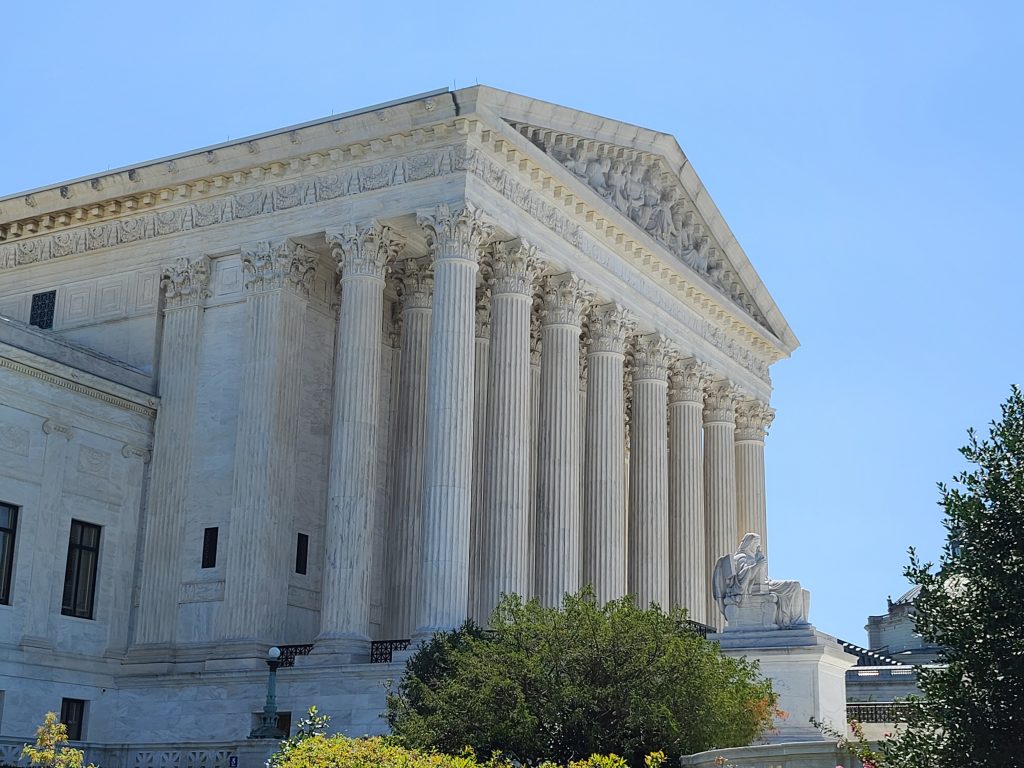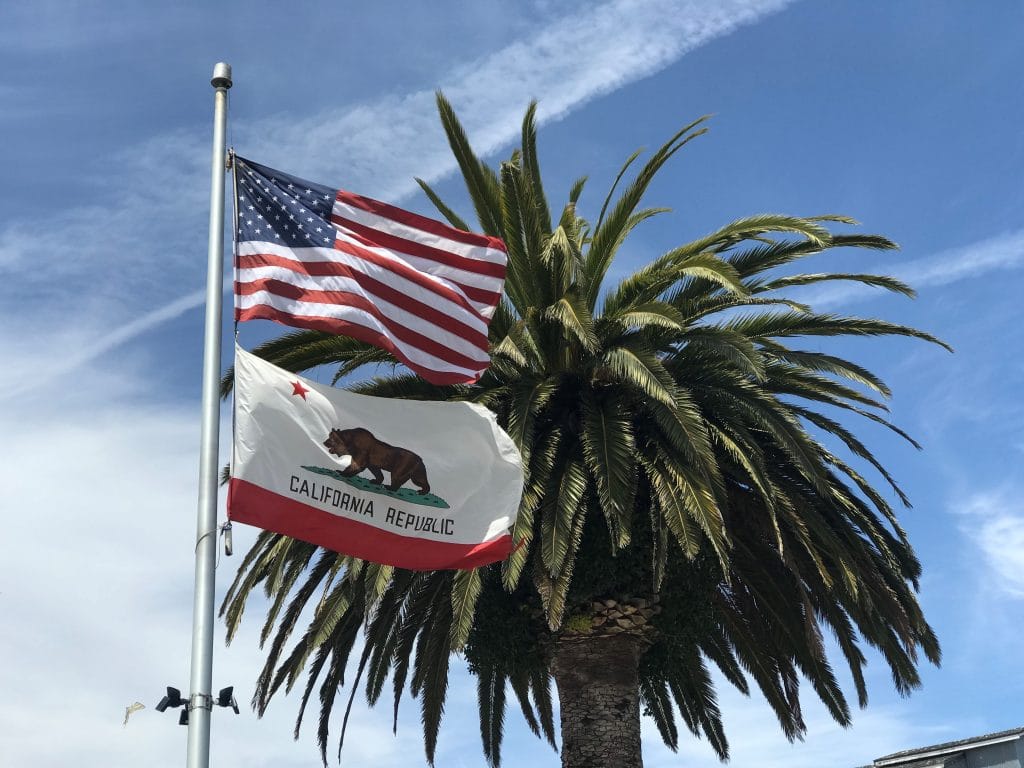Yesterday saw a gunman carry out a horrific attack in Buffalo, New York which initial reports indicate left 10 people dead and several more wounded. We will be following the situation closely as it unfolds and we begin to learn more. There will be a lot of reporting of varying quality on this barbaric event.
The Reload‘s mission is to cover firearms policy and politics. This attack may influence both at either the state or federal level. But it’s far too early to tell. We offer our condolences to those who lost their lives or their loved ones. We will keep an eye on how things develop from here.
There are several stories this week where we do have enough information to examine what impact they will have, though.
The first is the Supreme Court’s leaked draft overturning Roe v. Wade. The rare leak provides further reason to think the Court may be poised to deliver a win for gun-rights activists. I take a look at exactly why that is.
The other story stems from California’s decision to remove another popular series of handguns from their roster. The list already represents the smallest number of legal pistols in the country, and the state keeps making it even smaller. Contributing Writer Jake Fogleman explains why that could put California back in the sights of the federal courts.
Plus, we have an exclusive interview with Allen West on the podcast detailing his rationale for challenging Wayne LaPierre in the NRA’s upcoming leadership election.

Analysis: What the Supreme Court Draft Striking Down Roe v Wade Could Mean for its Gun Case [Member Exclusive]
By Stephen Gutowski
The recently leaked draft of the majority opinion in the Supreme Court’s abortion case may provide insight into what’s coming in its gun case.
Last week, Politico published the first draft of a proposed majority opinion in Dobbs v. Jackson Women’s Health Organization. The rare leak shows at least five justices had sided with Mississippi in upholding the state’s ban on abortions during preliminary deliberations. The first draft, written by Justice Samuel Alito, explicitly overturns the Roe v. Wade precedent.
The Dobbs opinion doesn’t mention guns. In fact, Alito goes out of his way to say the decision impacts no other issues.
“We emphasize that our decision concerns the constitutional right to abortion and no other right,” Alito writes. “Nothing in this opinion should be understood to cast doubt on precedents that do not concern abortion.”
However, the reasoning Alito relies on in Dobbs is one that the Court could also use to strike down New York’s restrictive gun-carry law in NYSRPA v. Bruen. His underlying argument for why abortion is not a constitutionally-protected right is one that activists have long said proves keeping and bearing arms is.
According to Alito, history and tradition undermine the case for abortion protections. He spends much of the opinion laying out the argument. He goes so far as to list examples of abortion bans in effect during the founding era.
“Until the latter part of the 20th century, there was no support in American law for a constitutional right to obtain an abortion,” Alito wrote. “Zero. None. No state constitutional provision had recognized such a right.”
He said the presence of abortion bans and lack of protections for the procedure during the country’s early days, coupled with the lack of explicit mention of it in the Constitution, implies it should not be recognized as a protected right without a new amendment.
“The inescapable conclusion is that a right to abortion is not deeply rooted in the Nation’s history and traditions,” Alito wrote.
Gun-rights advocates have spent over a decade building up a strikingly similar legal argument. In addition to the advantage of having the right to keep and bear arms explicitly written into the text of the Bill of Rights, they’ve argued history and tradition point to only limited restrictions on firearms. They’ve said an examination of American history and tradition not only protects gun rights but also undermines many of the highest-profile gun restrictions states have implemented.
That’s because many of the most disputed gun restrictions trace their origins to the 20th Century, the same period Alito argues abortion protections originate. Policies like “assault weapons” bans or magazine size restrictions date to that time. As does the New York gun-carry permitting law the court is currently reviewing in Bruen.
If they take the same dim view of the New York law’s history and tradition, it would likely mean an end to “may issue” style permitting systems where government officials are given broad leeway to deny applicants if they believe they don’t have a “good reason” to carry a concealed gun.
Perhaps more importantly, though, the Court could establish a new standard of review for all future Second Amendment cases as well. Gun-rights advocates have long complained lower courts are effectively ignoring the Supreme Court’s precedent in Heller v. D.C. when they uphold restrictive gun laws. They want gun cases to be decided on whether restrictions fit with the text of the Second Amendment as well as the history and tradition of gun laws in the United States.
The justices asked several times about what standard it should implement during oral arguments in Bruen. Several of them seemed to favor the text, history, and tradition standard, which counts Justice Brett Kavanaugh as one of its originators.
“Some of your amici have asked us to provide further guidance to lower courts in cases beyond your own,” Justice Neil Gorsuch said. “They’ve pointed out that some lower courts have refused to apply the history test, for example, and said they will not extend Heller outside the home until this Court does. Other courts have applied intermediate scrutiny and variations of that. Some have suggested that strict scrutiny would be appropriate to treat this right comparably to other rights under our modern tiers of scrutiny.”
“I think we would start with the idea that text, history, and tradition is an appropriate way to deal with this right,” Paul Clement, who represented the plaintiffs, said in response. “That’s what the Court said in Heller.”
The legal reasoning isn’t the only thing about the leaked draft opinion in Dobbs that signals the Court may be equally aggressive in Bruen. There’s also just the fact the Court appears poised to take as big of a step as overturning Roe v. Wade. It there are five votes to do that, there may be five votes to start expanding the Court’s case law on the Second Amendment.
Chief Justice John Roberts has long favored a more incremental approach to moving the court’s positions on significant issues. Politico reported he wasn’t one of the judges who voted for overturning Roe, and the opinion being assigned to Alito provides further evidence for the idea. That means the other conservatives on the Court likely bucked Roberts’s preference and decided on the more aggressive path.
That’s another reason to think the Court might not only overturn New York’s gun-carry law but go even further. Striking down all permitting requirements still seems unlikely, and Roberts was the only one in oral arguments who had a question approaching that idea. But it isn’t difficult to see the Court become much more active in Second Amendment litigation moving forward.
The Supreme Court hasn’t issued a major Second Amendment ruling in 12 years. Just taking on more than one case a decade would be a significant change.
Of course, the decision to take Bruen was surprising in the first place for that reason. The Court initially took a much less consequential case against New York dealing with gun transportation restrictions. But it ultimately went nowhere because New York changed their law in a successful attempt to moot the case after it was accepted.
Then a slate of cases dealing with most of the significant live issues surrounding the Second Amendment was denied by the Court without explanation.
So, when the Court decided to directly weigh in on whether the Second Amendment guarantees a right to carry a gun outside the home, it represented a reversal. It implied a potential change of heart after the makeup of the Court also changed thanks to the addition of Amy Coney Barrett.
That already provided good reason to believe the Court may be moving to broaden its take on Second Amendment protections. Now the leaked Dobbs opinion offers even more. The Supreme Court is difficult to read from the outside and has proved susceptible to political pressure in the past, though. There are no guarantees when it comes to predicting what the Court might do.
Podcast: Allen West Explains Why He’s Running Against Wayne LaPierre [Member Early Access]
By Stephen Gutowski
We have an exclusive interview with Allen West for you this week.
He announced on Monday he would accept the call of current and former board members to challenge Wayne LaPierre for the control of the NRA. He will be pitted against the long-time head of the organization in a fight for the group’s future. The results will determine how the NRA moves forward after years of controversy coupled with financial and legal struggles.
West says the gun-rights group is in desperate need of reform. He pledged to bring transparency to how the group handles its finances. He accused a “cabal” of top NRA leaders of blocking reform efforts and putting the group in legal limbo.
He said the recent downturn in membership even as gun ownership has grown is a symptom of LaPierre’s mismanagement. He argued leadership had lost the trust of members and that was the core of their problem. He said restoring trust is his top priority. West attacked New York Attorney General Letitia James (D.) for being biased against the NRA, but said LaPierre had given her the ammunition she is now using to try and capture control of the group.
West responded to several critiques of his run from NRA board member David Keene. He also rejected the idea his heated rhetoric repels more potential NRA members than it attracts, a common criticism of the group’s current approach.
He said refocusing the NRA on core priorities such as safety training and marksmanship were key pillars of his plan to start growing the organization again. West said his reputation, service in the military, and previous time as a board member will also help him convince the board to choose him over LaPierre. That decision will be made by the board at this month’s Annual Meeting which West says he will attend.
Plus, Contributing Writer Jake Fogleman and I discuss California’s age-based rifle ban being struck down as the state removes another popular pistol from its handgun roster.
You can listen to the show on your favorite podcasting app or by clicking here.
Video of the entire show is also available on our YouTube channel.

Analysis: Is California’s Handgun Roster on a Collision Course with the Federal Courts? [Member Exclusive]
By Jake Fogleman
The Golden State continues to tempt judicial fate with the administration of its handgun roster law. Before too long, it could wind up costing them in court.
Last Friday, the California Department of Justice announced it is removing all previously approved models of the popular Heckler and Koch (H&K) USP pistols from its handgun roster. It did so without warning or elaboration on the rationale behind the decision.
Gun owners were simply left to speculate as to why a well-established gun maker’s popular handgun, used safely across the country and around the world, could no longer legally be sold in the country’s most populous state.
While this latest move was unexpected, it was not an aberration. Different handgun makes and models have been unceremoniously dropped from the list of state-approved pistols many times since the Unsafe Handgun Act became California law in 2001. There have been 33 models decertified so far this year alone, and that number will only grow as the year goes on.
That’s because ever-increasing requirements for a handgun to meet approval have charted a gradual course toward a total ban on handgun sales in the state.
When the law was signed, a handgun needed to have a manual safety, a loaded chamber indicator, a magazine disconnect mechanism, and pass a drop test to meet approval. In 2007, the California legislature passed a law declaring that a semi-automatic handgun could not be approved unless it was equipped with microstamping technology once such technology was declared feasible.
In 2013, then-Attorney General Kamala Harris (D.) declared that the technology had arrived, despite evidence to the contrary, and the microstamping requirement officially went into effect. Since then, there have been zero new handguns approved to the roster due to the inability of gunmakers to comply with an as-of-yet infeasible technology. Meanwhile, handguns have continued to be removed from the roster for various reasons, resulting in an ever-diminishing supply of legal handguns for civilians to purchase.
A comparison between the California DOJ’s list of recently de-certified handguns to its list of newly approved handguns starkly reveals the trend at hand.
As of the writing of this piece, there are 788 handguns listed as “certified for sale” on the state’s approved handgun list, all of which were manufactured and released at least a decade ago. For context, despite being the second-most restrictive state to utilize a roster system, the Massachusetts approved handgun roster contains roughly 1,100 different options and includes most modern generations of common civilian pistols (including H&K USPs). In states without roster limitations, the options available for civilian buyers number well into the thousands.
When different color offerings are factored in—that’s right, each cosmetic feature offered in a particular model must be individually approved—the number of unique handgun makes and models still legal to buy in California is actually far more limited than the 788 figure would suggest.
Exacerbating this issue is the recently passed Assembly Bill 2847. Set to go into effect in July, the law will automatically remove three previously approved handguns from the roster for every new model the state approves—if it ever does approve another gun.
The addition of this latest roster requirement, a three-for-one swap intentionally meant to further diminish the options for legal handgun purchasing, could finally be the straw that breaks the camel’s back in court.
Previous challenges against the roster regime have proved fruitless for gun-rights advocates. In 2018, the California Supreme Court upheld the microstamping requirement in a challenge brought by the National Shooting Sports Foundation. That same year, the Ninth Circuit upheld both the handgun roster and the microstamping requirement, specifically in Pena v. Horan. The Supreme Court declined to hear the case on appeal in 2020.
Since then, however, the court has added an additional originalist justice and has already taken up another Second Amendment case where it looks poised to strike down restrictive laws around gun carry.
It has also inadvertently signaled its willingness to make bold rulings on controversial matters if the leaked Dobbs opinion is any indication.
Add in the new additional three-for-one requirement, and it would seem California’s roster system is due for renewed judicial scrutiny. A legal challenge in federal court against this new requirement is already underway, and it could provide just the vehicle for this to happen.
A more conservative court newly motivated to take on gun-rights cases could view California’s slow-motion ban on handgun purchasing the same way it has viewed previous attempts at outright handgun bans.
That’s it for now.
I’ll talk to you all again soon.
Thanks,
Stephen Gutowski
Founder
The Reload







